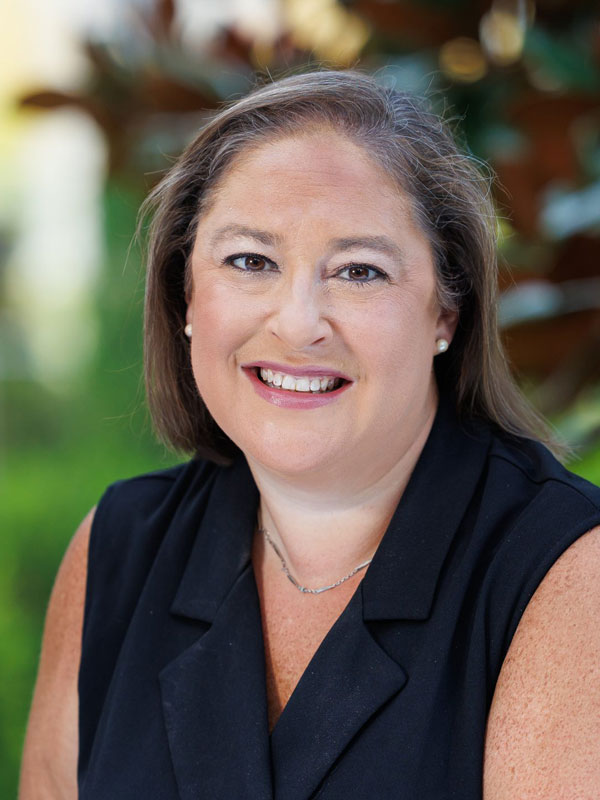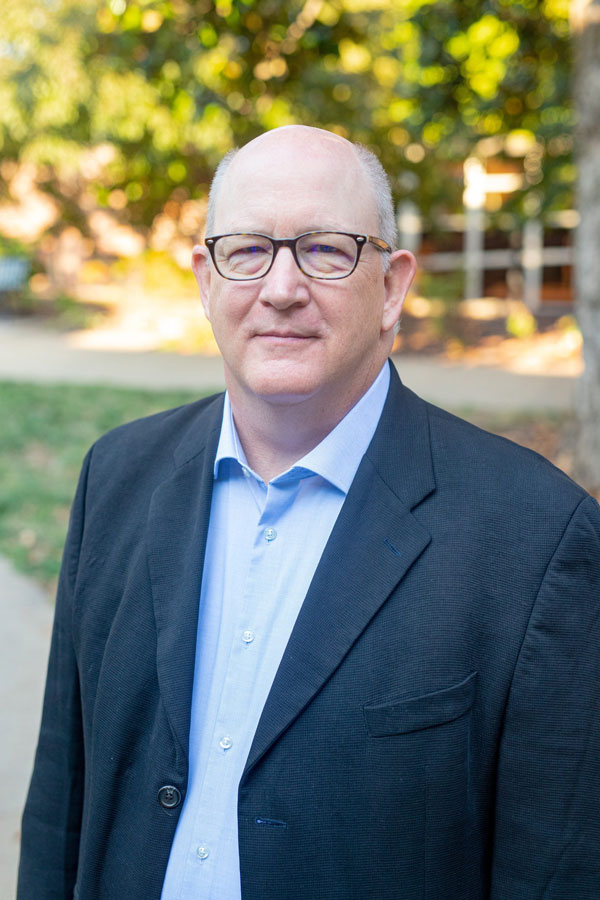Get started with Mizzou
Apply hereMaster of Arts
Strengthen your journalism and multimedia skills to become a more engaging, effective storyteller. The online master of arts in journalism with an interactive media emphasis stands on Mizzou's legacy while helping working professionals look toward the next stage of their careers. A traditional journalism foundation will enhance what you know about ethics, research and leadership in the industry to equip you for more advanced roles.
From there, the interactive media emphasis explores the interplay between journalism and visual storytelling, digital technologies for identifying, reaching and monitoring audiences and key platforms for finding sources and publishing content. In an ever-evolving media landscape, this 33-credit-hour online master’s program helps you adapt as a content creator and communicator and effectively connect with multiple audiences. The courses in the program are offered in 8- or 16-week sessions.
Unsure about whether the master’s program is right for you? Get introduced to its scope through the online Graduate Certificate in Interactive Media.
Quick facts
Official name
Master of Arts in Journalism with an emphasis in Interactive MediaCampus
Program type
Master's degreeAcademic home
Missouri School of JournalismDelivery mode
Blended, one campus visit requiredAccreditation
Higher Learning CommissionCredit hours
33Estimated cost
$36,382.50*This cost is for illustrative purposes only. Your hours and costs will differ, depending on your transfer hours, your course choices and your academic progress. See more about tuition and financial aid.
Why earn a master’s degree in interactive media?
No matter if you work in journalism, media, advertising, public relations, marketing or communications, you’ve observed several industry changes over the past decade. You increasingly turn to social media to seek out sources and publish and promote content. At the same time, story formats have changed — from how the web influences user experience to the roles images and videos play in context and engagement.
Between these changes, you’ve likely learned that messaging and content delivery vary across platforms and media. Added to this, you routinely turn to data and analytics tools to monitor content performance and uncover ideas for your next story.
The shift from traditional to digital media is an always-evolving process. Mizzou’s online master’s in journalism with an emphasis in interactive media places you ahead of the curve while simultaneously preparing you to lead:
- Investigate the psychological, social, ethical and legal issues influencing digital news, advertising and public relations and their effects on society.
- Grow your foundational journalism and media knowledge to position yourself for leadership within your organization.
- Understand how to engage various audiences through strategic storytelling.
- Learn from faculty who are accomplished journalists and researchers.
- Exchange ideas with other working media professionals through interactive digital classroom environments and group projects.
- Explore the intersection between technology and design in relation to storytelling and engaging your audience, including for user experience, graphics and multimedia.
- Strengthen your digital technology skills, including for multimedia use, content platforms, social media and data analytics.
- Become a more versatile reporter, editor, public relations specialist or communications professional in an increasingly competitive industry.

Career prospects
Digital technologies, social media consumption and the rapid pace of news are likely fueling demand for 14% more media and communications positions over the next decade. Digital storytelling and a solid foundation in traditional journalism principles set you apart from other candidates and reflect your forward-looking vision.
Potential opportunities include:
- Media relations manager
- Senior proposal coordinator
- Writer, journalist and blogger
- Multimedia journalist
- Content manager or editor
- Digital editor
Program structure
The online master’s in journalism requires 33 credit hours divided between a core, the emphasis area and a capstone project. Courses are offered in 8- or 16-week sessions. Students typically take one or two classes each semester and finish in two to three years.
The core advances your knowledge of journalism and media professional standards. You’ll delve into the functions of print and electronic media in the United States, as well as current issues, and reinforce your understanding of mass media ethics. To further assist you in gathering and analyzing information, you’ll become more familiar with quantitative and qualitative research methods used in journalism and media.
Delivery of this program is blended. Courses are primarily online; one on-campus seminar held in the fall is required, but individuals may elect to attend up to three times.
Interactive media courses
Develop your digital storytelling and multimedia skills through courses covering:
- Communication laws for print, broadcast, advertising and other media
- Branded strategic storytelling techniques for content creation, distribution and engagement
- Public relation techniques for nonprofit and private organizational models
- Web communication strategies
- Acquiring and analyzing electronic information
- The impact of technology on journalism
- Visual communication techniques
- Engaging and maintaining community relations as a journalist
- Evolving media business models, including funding sources
- Social media and analytics tools for developing online audiences
- Mass and interpersonal communications theories
- Management techniques for media organizations
Review all courses for the online master’s in journalism with an interactive media emphasis.
Delivery
Blended, one campus visit requiredCalendar system
8- or 16-week sessionsTypical program length
2 or 3 yearsTypical course load
1 or 2 classes each semesterAccreditation
The University of Missouri is accredited by the Higher Learning Commission, one of six regional institutional accreditors in the United States.
Faculty spotlight

Jim Flink teaches core undergraduate courses and online graduate courses, focusing on emerging technologies, changing media business models, digital strategies, content marketing, sports journalism, and the capstone experience, AdZou. Flink teaches courses across multiple disciplines and schools. His course work covers AI, immersive media, drones and more.
Flink is also a consultant with the Reynolds Journalism Institute and works with MU Journalism Abroad and for MU Extension. He helped establish an Innovation Lab at the Trulaske College of Business to bring 5G to the Mizzou campus.
Flink previously worked for Newsy and Kansas City’s KMBC-TV. His work was featured on “Larry King Live,” “Good Morning America” and more. Flink has won many awards: an Emmy, Missouri and Kansas Broadcasters Association awards and more. Flink has international journalism experience, working for the Korean Broadcasting System, the United Nations Educational, Scientific and Cultural Organization and teaching in the Philippines.

Amy Simons teaches news literacy, multimedia journalism and advanced social media strategies. Since joining the faculty, Simons developed an interest in international journalism, training professionals on campus and abroad. She has traveled across China and the European Union, teaching web-first workflows, mobile journalism techniques and how to use social media as a reporting tool and a means to disseminate journalistic content.
She is an advisor to the University of Missouri (Mizzou) Women in Media, supporting members’ journalism, advertising and public relations careers. She advised ONA Mizzou and served as a mentor in student competitions.
Simons is known for her expertise in teaching online courses. She has won several awards for her innovative, interactive approaches, including the Mizzou Online Excellence in Teaching Award, the MU Connect Champion Award and more.
Simons hosts and produces Views of the News, a weekly program on KBIA-FM and KBIA.org.

Keith Greenwood teaches courses in journalism and photojournalism history, photography’s role in society and research methods. His research interests include photojournalism history and the influences that determine depictions of subjects in photographs.
Greenwood has taught at Michigan State University and the University of Oklahoma. He has received top-paper awards from the Association for Education in Journalism and Mass Communication and has served as website administrator for the Association for Education in Journalism and Mass Communication visual communication and history divisions. He was named a Fellow in arts and humanities research and creative activities for the University of Missouri from 2022-2024 and has received the McKerns Grant for research from the American Journalism Historians Association.
Greenwood worked in radio and as a freelance photographer before focusing on photojournalism. He is a member of the American Journalism Historians Association, the National Press Photographers Association and more.
